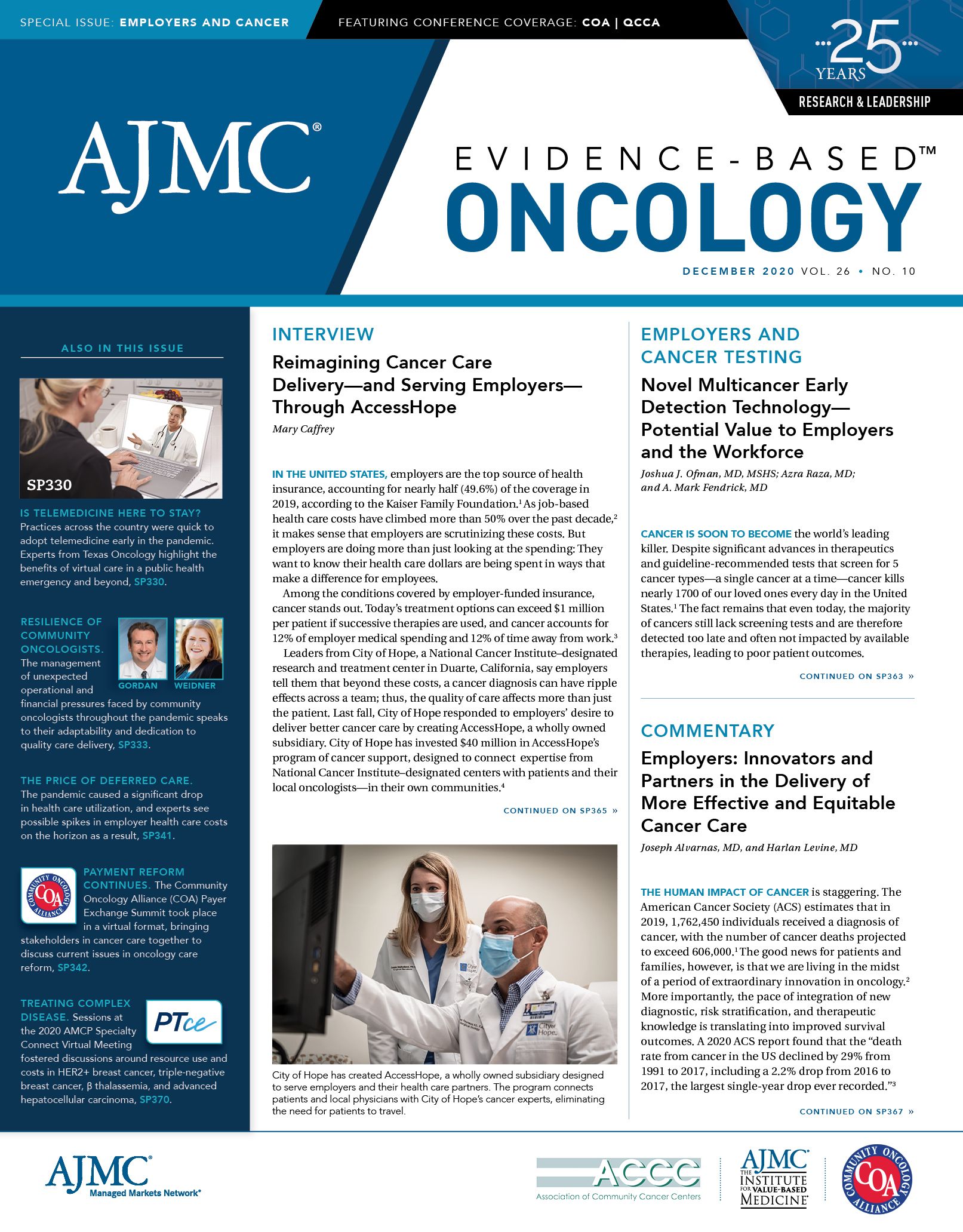- Center on Health Equity & Access
- Clinical
- Health Care Cost
- Health Care Delivery
- Insurance
- Policy
- Technology
- Value-Based Care
Mortality Higher Among Women With Interval vs Screening-Detected Breast Cancers
Results from a study on Canadian women who did and did not participate in a population-based breast cancer screening program show that interval breast cancers are more aggressive and deadlier than screening-detected cancers.
Results from a study on Canadian women who did and did not participate in a population-based breast cancer screening program show that interval breast cancers (IBC) are more aggressive and deadlier than screening-detected breast cancers (SBC), according to the retrospective study published in JAMA Network Open.
“Many of the aggressive and lethal forms of breast cancers either go unnoticed on mammogram or develop in the interval between mammograms,” noted a statement on the results.
The patient population consisted of 69,025 women from the Canadian province of Manitoba who did and did not participate in its population-based screening program during the January 2004 to June 2010 study period. (“Every woman in Manitoba is invited via a personal letter to participate in the population-based screening mammography on their 50th birthday,” the study authors noted.) They accounted for 212,579 screening mammograms and ranged in age from 50 to 64 years. Data were gleaned from the Manitoba BreastCheck registry, the Manitoba Cancer Registry, and Statistics Canada census data.
Tumor and patient characteristics of both cancer types were compared via multinomial logistic regression analysis, and mortality risk for each was assessed using competing risk analysis. The 2 primary outcomes were tumor characteristics and breast cancer–specific mortality.
Results from the authors’ analysis show that 1687 invasive breast cancer diagnoses were made, equating to a 2.4% positivity rate among the women in the study. Broken down, the diagnoses were as follows:
- 705 were SBC
- 206 were IBC
- 275 were noncompliant
- 501 were from outside detection
SBC were defined as those found diagnosed within 6 months of an abnormal screening, while IBC were considered so if they were diagnosed in the 2-year period after a normal mammogram. “Noncompliant” was used to classify women with invasive breast cancer diagnosed more than 2 years after their previous screening mammogram and who had missed at least 1 previous mammogram.
The overall mortality rate was 13.3%, for 225 deaths. Of these deaths, the breast cancer-specific mortality rate was 75.5%, for 170 deaths; most (94) happened among screening program nonparticipants, and 20, 27, and 29 occurred among women in the SBC, noncompliant, and IBC groups, respectively.
IBC had greater odds of being both grade 3 (odds ratio [OR], 6.33; 95% CI, 3.73-10.75; P < .001), vs grade 1, and estrogen receptor (ER)–negative disease (OR, 2.88; 95% CI, 2.01-4.13; P < .001) compared with SBC. For cancer grade, these results were found after adjusting for income quintile, ER status, ERBB2 status, and age; for ER status, after adjusting for income quintile, grade, ERBB2 status, and age.
Breast cancer–specific mortality remained higher in the IBC group vs the SBC group even after a 7-year follow-up (HR, 3.55; 95% CI, 2.01-6.28), including a 2-year sojourn, “to account for lead-time bias,” the authors noted. However, non–breast cancer mortality was similar (HR, 1.33; 95% CI, 0.43-4.15).
“Breast cancer is a highly heterogenous disease; although indolent cancers with likelihood of better outcomes are detected easily by screening mammography raising overall incidence of breast cancer, many of the aggressive and lethal forms of breast cancers either go unnoticed on mammogram or develop in the interval between mammograms,” the authors concluded. “Improvement of breast cancer deaths and overall population mortality requires strategies above and beyond conventional screening mammography.”
Their suggestions include individualized screening protocols, utilizing other methods of breast cancer detection (eg, tomosynthesis, MRI), and changing screening frequency, “with attention to potential for consequences of overdiagnosis.”
Reference
Niraula S, Biswanger N, Hu PZ, Lambert P, Decker K. Incidence, characteristics, and outcomes of interval breast cancers compared with screening-detect breast cancers. JAMA Netw Open. Published online September 25, 2020. doi:10.1001/jamanetworkopen.2020.18179

